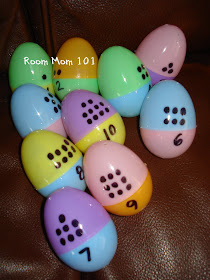Young children love to go for nature walks and collect autumn treasures. This collection from the outside can then be brought inside for some fun indoor activities. The following article provides some suggestions on how to use leaves (nuts and other fall finds) in an early childhood curriculum to encourage the development of math skills in young children.
Sorting Autumn Leaves
The best way to start this activity in a preschool or daycare setting is to go for a nature walk with the group of children and allow them to collect the leaves. If this is not possible, then a collection of real leaves, or even paper or silk leaves, can be used. In small groups or in a large circle, the teacher can ask the children how these leaves can be sorted into groups. She/he can ask questions such as:
- How could we put these leaves into groups?"
- What makes these leaves the same and what makes these leaves different?"
- What colors do we see?
- Are some leaves bigger or smaller?
- I wonder how many leaves we have all together?
- I wonder which group of leaves is the biggest?
Simply stating these questions allows children to think about size, shape and color differences and begins the steps towards basic math concepts such as categorizing.
Depending on the age of the young children, they will need more or less guidance in their sorting choices. Once the groups have been decided upon, then the categories can be counted. For instance, if the children decided to sort the leaves by color, then all the red leaves will be counted and so on. Perhaps, the children will decide to sort the leaves by design or size. This decision can be left to the children or given by the teacher. After the small groups of leaves have been counted then a graph can be drawn on a paper by the teacher and this illustration posted in the room.
Felt Leaves on a Flannel Board
Another way of teaching children about sorting leaves is to use felt leaves on a flannel board. Each child can be given a leaf to bring to the board to place into the appropriate category or row at circle time. Afterwards, the children can then be asked to come back to the flannel board to remove a leaf according to the teacher's request, such as "please hand me the biggest red leaf on the board". This latter activity works well as a transition out of circle time. When the leaves are coming onto the board, the teacher can remind the children of the words used for sorting size: big, bigger and biggest as well as small, smaller and smallest. A further step is to ask the children to repeat these words to encourage language development.
Sensory Table for Fall Collections
Placing fall collections into a sensory table provides children a hands-on activity with the autumn leaves, nuts, pinecones and so forth. By placing containers with small compartments, such as muffin tins or ice cube trays, the children are provided opportunities to sort and collect. Finding opportunities in this free time activity to ask open ended questions further develops math skills in young children. Asking a child to count how many nuts they have found, for example, fosters math skills.
Math opportunities are abundant in an early childhood setting during all seasons through planned activities which encourage the development of basic math skills.





.JPG)
.JPG)





